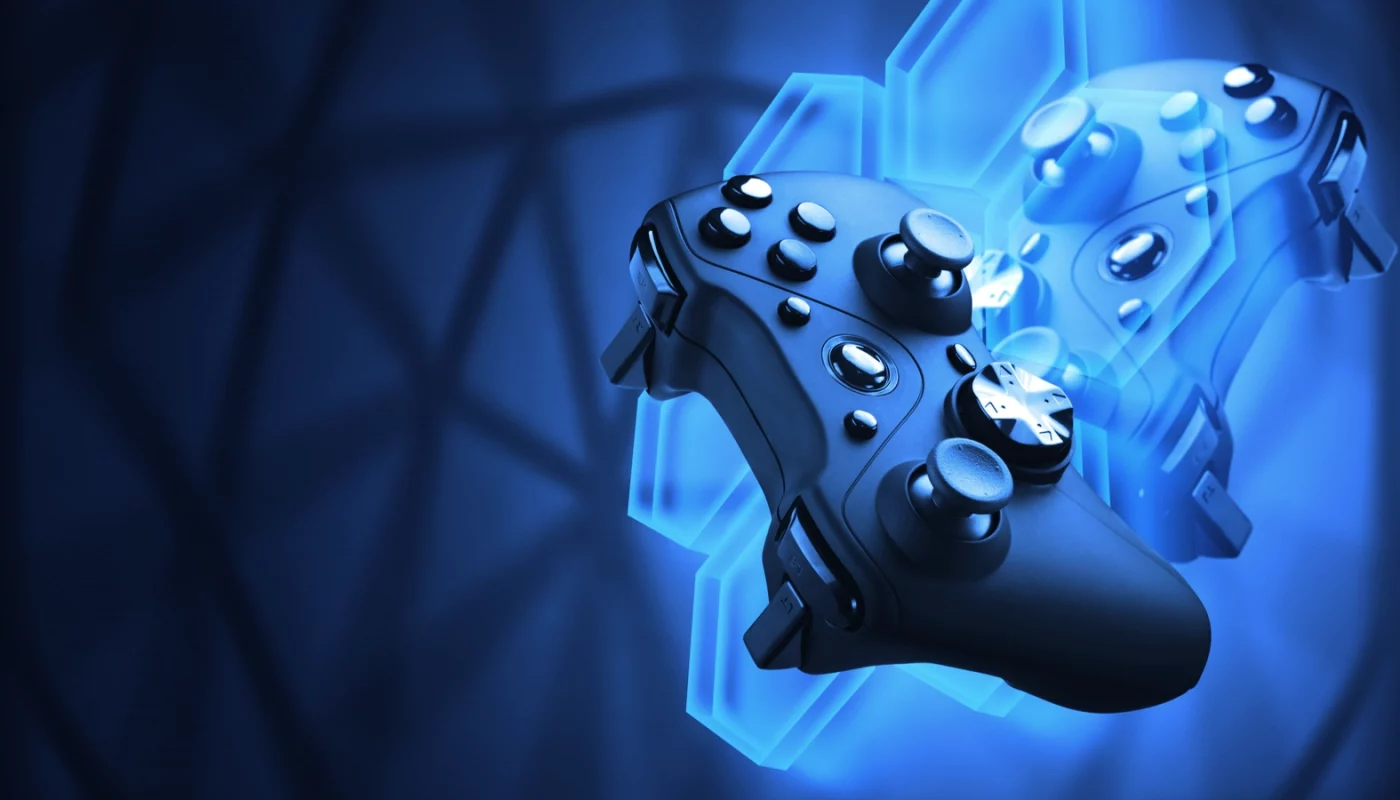In the crypto world, blockchain games are quickly becoming the newest and most popular trend. GameFi Membership is fast rising as it revolutionizes the gaming world by providing users with a slew of new features, including more control over their games and the potential to profit from gambling.
Dapp Radar claims that
Last year, gaming-related NFTs brought in $ 4.8 billion in revenue, accounting for 20% of all NFT sales in 2021. In terms of user popularity, GameFi applications have eclipsed even DeFi. According to Bloomberg, in November 2021, about half of all active bitcoin wallets connected to decentralized applications were dedicated to gaming, while the percentage of wallets connected to DeFi DApps declined to 45 percent.
Dapper Labs’ CryptoKitties, a virtual pet gathering platform founded in 2017, was one of the first successful blockchain games. However, prominent NFT-based games like Axie Infinity have fueled the NFT gaming frenzy in the last year. Axie Infinity is a Pokémon-style NFT game in which players may buy mythological pets and love potions for hundreds of dollars. In October 2021, it reportedly made over $ 2.3 billion in revenue. It has approximately 2.5 billion monthly active users, some of whom rely only on gaming for a living.
For the past few months, hundreds of new NFT games such as Splinterlands, CryptoMines, and Alien Worlds have drawn hundreds of thousands of new users every day. According to DappRadar, there are over 1,000 blockchain-based games available right now, with over 70 new ones being launched every month.
The greatest names in the gaming business are foraying into the area of blockchain-based games.
Big businesses like EA Sports, Ubisoft, and Zynga are already considering entering the NFT gaming realm, seeing blockchain as a viable revenue stream for the global gaming industry, which Fortune Business Insights estimates will be worth more than $ 200 billion by 2020.
In its military shooter Ghost Recon Breakpoint, Ubisoft, the French firm behind Assassin’s Creed and Far Cry, introduced a limited-edition non-fungible token (NFT) called Numbers in December. This made them the first large publishers to use the acronym NFT in their names, signaling a significant shift in the gaming industry’s widespread adoption of blockchain technology. This simply adds to the notion that blockchain games are the way of the future.
The prime minister, on the other hand, did not follow the plan and was faced with a strong reaction to the inept implementation. Gamers have claimed that getting one free item, a decorative headgear for avatars in the game, takes 600 hours of playtime time. Those in the crypto world are wary of centralized platforms and firms working in the Enter industry, such as Ubisoft, because they contradict many of the values they represent. The launch did not receive the positive response that Ubisoft had hoped for, with only 15 NFTs being acquired for a total value of less than $400, according to a report.
The failure was due to the fact that “it was half done,” according to John Linden, CEO of Mythical Games. “The key to success with the NFT is their full integration into the game’s home economy for users to participate,” he stated. You’ve just messed it up. “Technology isn’t something you can rely on.”
Despite the somewhat poor launch, Ubisoft claims that this is only the beginning, with further drops planned for 2022. Blockchain-based games, on the other hand, have the potential to transform the industry, provide benefits to developers, and open up a whole new universe of opportunity for players, making GameFi a far more appealing prospect.
In this post, we’ll look at how blockchain could transform the gaming industry if deployed in a fully decentralized and decentralized way. Finally, we address the future of blockchain-based games, as well as how gamers and game producers might avoid potential drawbacks or undesirable repercussions. Kudos to the blockchain.
To begin, what exactly are blockchain games?
Blockchain games are a sort of game in which digital video game assets are produced on a blockchain and have real value in the form of non-convertible tokens (NFTs) that can increase in value, similar to stocks. Because these NFTs are held on a blockchain, which is a decentralized and public ledger, consumers have full control over their virtual assets, allowing them to keep, resell, and trade them as they see appropriate.
How blockchain is transforming the gaming industry
While blockchain and NFT games are still in their infancy, consumers are attracted to them because they provide a variety of innovative features not seen in traditional games. Both cryptocurrency aficionados and gamers have found it appealing due to revolutionary new concepts such as gaming to earn and increased player control. The potential for blockchain-based games is enormous, and as the technology matures, so will the number of suggestions. We’ll go through some of the primary benefits of NFT-based games below.
Players will have more control
Because they retain possession of their resources, players have more control over blockchain-based games. This means that, unlike traditional games, where producers have all permissions and are allowed to remove or edit anything as they see appropriate, resources acquired or gained by players in the game cannot be erased or taken by anyone. Players will not lose any resources they have acquired while playing the game if the developer business decides to stop the game or remove particular features. In blockchain games, once someone possesses an asset, it cannot be taken away from them.
When someone holds an asset in the form of an NFT, it stays their property and can be saved in a digital wallet, sold, or swapped. This means that NFT assets can survive the game’s length and preserve or even increase in value as long as demand exists.
Smart contracts are to blame for this
assisting in the propagation of NFT in video games As a result, when a given condition is met, such as B. finishing a game task or acquiring an object, ownership of a digital asset is immediately transferred to the player. The developer cannot update the smart contracts since the data posted in a public blockchain without authorization is immutable, giving the player more security and control.
This provides players with new ways to profit from their abilities. You can track the history of each NFT across the entire chain thanks to blockchain. If a player is successful, they can sell or bid on their in-game resources, such as rare collectibles and winning tools, if they are successful. People can basically pay to have some gaming-related services provided to them.
Play to win in games
The development of blockchain and NFT-based games has introduced a number of ground-breaking features, one of the most innovative of which is gambling. Play to Win games are a new model that shakes up the classic “play to win” structure as well as the more insidious “pay to win” trend by allowing players to earn tokens or assets to play for specified goals such as B. beating a level or completing a task.
Tokens acquired in the game have real value and can be used to pay for a variety of things, including NFT transactions, exchanges for other cryptocurrencies like Bitcoin or Ethereum, and even real-world purchases. This allowed players to profit from their games.
The idea of monetizing in-game activity to fund real-world transactions is both intriguing and revolutionary, and it opens up a lot of possibilities. “GameFi” is the name for this revolution. GameFi believes that users should not just spend money on game content, but should invest it in assets that they can keep, enjoy, and even sell on secondary markets.
This was made possible by blockchain games. Players can earn currency and real-value assets using the blockchains that underpin them. As a result, a whole new digital economy emerged, rewarding players for gaming and turning games into a potentially lucrative source of revenue.
About Cudos
Cudos uses a metaverse that blends DeFi, NFT, and games to accomplish the vision of a decentralized web 3.0 that benefits all users. We are an open, interoperable platform that creates a completely immersive and gamified digital world by providing infrastructure that can support 1,000 times the demand for computing.
Cudos is a Layer 1 blockchain and Layer 2 computing community that aims to enable large-scale decentralized, illegal access to HPC. Our native CUDOS utility coin serves as the network’s backbone, providing investors and holders with excellent annual returns and liquidity.



